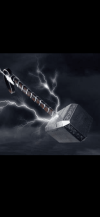Thank you for posting this! I never knew anything of the sort existed.Maybe y'all don't have it, doesn't mean no one does:
Rifle Barrel Chamber Pressure Testing Hardware & Software | Pressure Trace
Measure ACTUAL rifle chamber pressure for each shot, barrel harmonics, rise time, time to muzzle exit and OBT barrel timing.www.shootingsoftware.com
I still stand by the tried and true methods but this has my attention.

